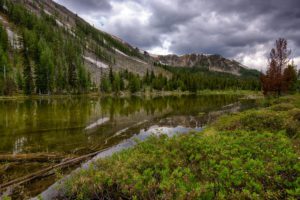For immediate release – December 21, 2022
Media contacts:
Cyndi Tuell, Western Watersheds Project (520) 272-2454; cyndi@westernwatersheds.org
Sandy Bahr, Sierra Club – Grand Canyon Chapter (602) 999-5790; sandy.bahr@sierraclub.org
Tricia Gerrodette (520) 378-4937; tricia.gerrodette@gmail.com
TUCSON, Ariz. – Today, the Bureau of Land Management once again quietly released its decision to authorize harmful livestock grazing in the protected San Pedro Riparian National Conservation Area (SPRNCA). Conservation groups see this decision to authorize livestock use in the riparian conservation area as contrary to the Bureau’s mandate to conserve, protect, and enhance the natural resources of the area, and as a clear indication that protection of this important river ecosystem takes a backseat to the livestock industry.
“As we’ve noted for over a decade, the agency is supposed to be conserving, protecting, and enhancing this conservation area. Instead, the Bureau has yet again capitulated to the livestock industry by allowing livestock grazing, which offers no ecological benefit and which the science clearly indicates will cause lasting damage,” said Cyndi Tuell, Arizona and New Mexico director of Western Watersheds Project.
The decision will authorize grazing for 180 cows on four allotments that are only partially located within the SPRNCA. Conservation groups have documented trespass livestock within the SPRNCA for over a decade and have pointed out the damage that even a few livestock can do to the area in a short period of time. “Despite our best efforts to get them to do their job, the Bureau has ignored the science about the adverse impacts of livestock grazing in the SPRNCA, as well as the long-term public interest,” Tuell added.
The SPRNCA – the traditional territory of the Chiricahua Apache, Ópata, O’Odham, Hohokam, and Sobaipuri people – was the nation’s first riparian National Conservation Area, created by Congress in 1988. The Bureau was given a mandate to “conserve, protect, and enhance” the unique desert oasis it encompasses. The area includes more than 46 miles of the San Pedro and Babocomari rivers, and nearly 55,000 acres of riparian areas and uplands, including four of the rarest habitat types in the Southwest (cottonwood/willow forests, marshlands, grasslands, and mesquite bosques). More than 400 bird species, 50 species of reptiles and amphibians, and 80 species of mammals are found in the SPRNCA, making this area a world-renowned biodiversity hotspot. A group of 21 scientists sent a letter to the Bureau on May 20, 2018, urging the agency to exclude livestock grazing, noting that if livestock grazing in the SPRNCA was reauthorized, the many aquatic and riparian species and ecosystem functions would be jeopardized and the critically important role of the Conservation Area as an ecological reference site would be lost.
“The Bureau’s action today puts at risk the values the San Pedro Riparian National Conservation Area was established to protect, including the ecology of the riparian area and the many plants and animals that rely on it,” said Sandy Bahr, director for Sierra Club’s Grand Canyon (Arizona) Chapter. “Allowing livestock grazing in the riparian area is contrary to recommendations from scientists and to the public interest and must not go unchallenged.”
The newly proposed decision allows livestock grazing to occur on four allotments within the SPRNCA, including within the riparian area of the Babocomari River. It yet again does little to address the ongoing issues of trespass livestock and it fails to address the negative impacts of grazing on recreation uses in the SPRNCA. According to ADEQ’s latest assessment reports, portions of the rivers that run through the SPRNCA are still impaired for E. coli. The Bureau has long been aware of the problems with E. coli contamination and the risks it presents to the visiting public, but is apparently unwilling to place public health and safety above the interests of the livestock industry.
“It just keeps breaking my heart,” said Tricia Gerrodette, Sierra Vista resident and activist. “For 27 years, I’ve been learning about the San Pedro River valley ecological values and the harm to those values from livestock grazing. I’ve helped to measure the E. coli levels in the water and we know how high those levels get. We also know the majority of the E. coli comes from cattle, since ADEQ did some very specialized testing that confirms that. And yet BLM continues to authorize grazing. It’s very disheartening.”
The decision to authorize livestock grazing depends heavily on “adaptive management,” which requires the Bureau to monitor conditions on the ground, as well as compliance with grazing terms and conditions, and then make changes to the grazing authorization after negative impacts are documented. However, at a recent public meeting the Bureau held to talk about a variety of issues in the SPRNCA, the Bureau lamented how understaffed it was. Scott Feldhausen, the Gila District Manager for the Bureau, told the group that the district has a 30 percent vacancy rate and the Bureau has a 20-50 percent vacancy rate nationally.
Conservation groups plan to challenge the proposed grazing authorization decision, issued December 21, 2022, and will continue their decades-long fight to protect this national treasure. Interested parties have just 15 days from the date they receive written notice of the decision from the Bureau to submit a formal protest of the decision. After the protests are resolved, the decision becomes final and there will be a 30 day appeal period.
“Despite the Bureau’s issuance of this proposed decision during the holiday season and with two federal holidays taking away from the already short timeframe we have to respond, we will never stop fighting for the future of this river,” said Tuell. “We will continue to demand the land managers do their job in compliance with the law.”
###






